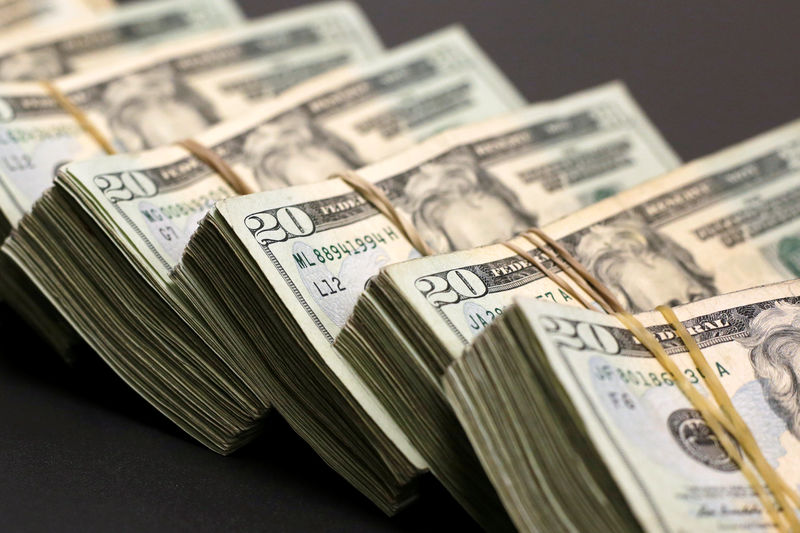* Virus fears and Sino-U.S. tensions drive dollar bid
* AUD heading for first weekly loss in six weeks
* Graphic: World FX rates in 2020 https://tmsnrt.rs/2RBWI5E
By Tom Westbrook
SINGAPORE, May 15 (Reuters) - The dollar eased from a three-week high on Friday but looked set for a modest weekly gain as rising Sino-U.S. tensions and worries about a second wave of coronavirus infections rattled investors.
Wavering hopes for a quick global recovery from the pandemic had the trade-sensitive Australian dollar poised to snap five weeks of gains with a 1% drop, its first weekly loss since early April.
The Aussie AUD=D3 was steady in morning trade at $0.6464, about the middle of the range it has kept all month.
The beaten-down kiwi NZD=D3 crept back over 60 cents to $0.6008 from a Thursday three-week low of $0.5958.
But most major currencies were steady as larger economies started to ease virus containment measures.
The yen JPY= was steady at 107.40 per dollar. A state of emergency in large parts of Japan was lifted on Thursday. a basket of currencies =USD the dollar is up about 0.5% this week.
An already-dismal near-term U.S. economic outlook has darkened further in the latest Reuters poll of economists, with a forecast for a 35% annualised second-quarter contraction. While a recovery is still forecast for the second half, the economy won't come close to regaining the ground it lost this year. ECILT/US
"The market is sort of in a wait-and-see mode at the moment, waiting to see in particular whether U.S.-China trade tensions really do escalate," said Rodrigo Catril, senior foreign exchange analyst at National Australia Bank.
"Trump is making a lot of vocal discontent, but the reality is that if he goes into any meaningful punishment, he knows it's going to have market consequences and given the brittle state of the U.S. economy, that's a tricky balancing act."
In an interview with Fox Business Network broadcast on Thursday, U.S. President Donald Trump said he was disappointed with China's failure to contain the coronavirus and suggested he could cut ties. are many things we could do. We could do things. We could cut off the whole relationship," he said.
China insists it has been transparent, but amid increasingly bitter exchanges both sides have questioned the future of a partial trade deal they signed in January.
The Chinese yuan CNH= , a barometer of the relationship between the world's two biggest economies, skidded to a one-week low overnight but recouped losses and was steady ahead of April industrial and retail sales data due at 0200 GMT.
Investors have been pleased by signs of a rebound in China's manufacturing sector but are closely watching the retail figures for signs of a return of consumer spending as the world looks to China for clues as to what a COVID-19 recovery looks like.
A Reuters poll of economists show expectations of a 1.5% gain in industrial output and a 7% drop in retail sales, narrowing from March's 15.8% sales drop.
"Data releases could shape the trading day...and could add to any positive momentum if they land near forecasts," said Michael McCarthy, chief market strategist at CMC Markets.
Elsewhere the British pound GBP= remained under pressure at $1.2221, after touching a five-week low of $1.2161 overnight after the British government reiterated its refusal to extend the Brexit transition deadline beyond December. euro also hit an almost five-year low against the Swiss franc of 1.502 francs EURCHF= as the crisis puts pressure on the single currency. It last held at $1.0840 EUR= .
